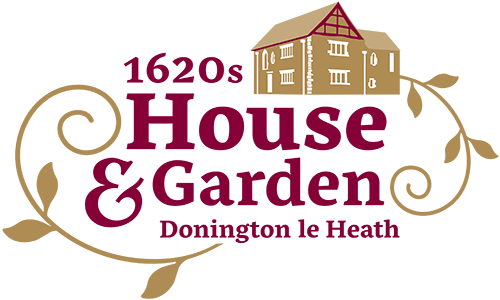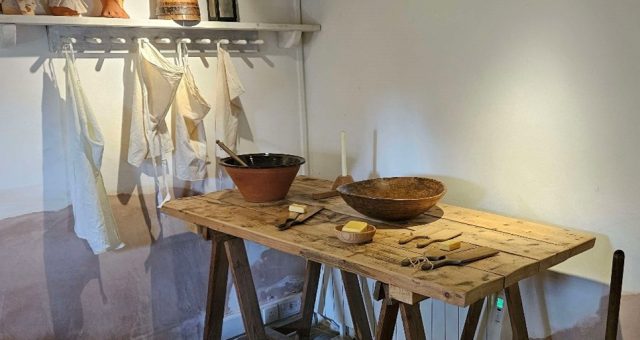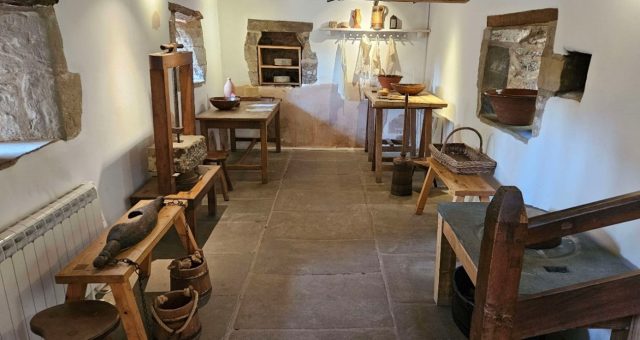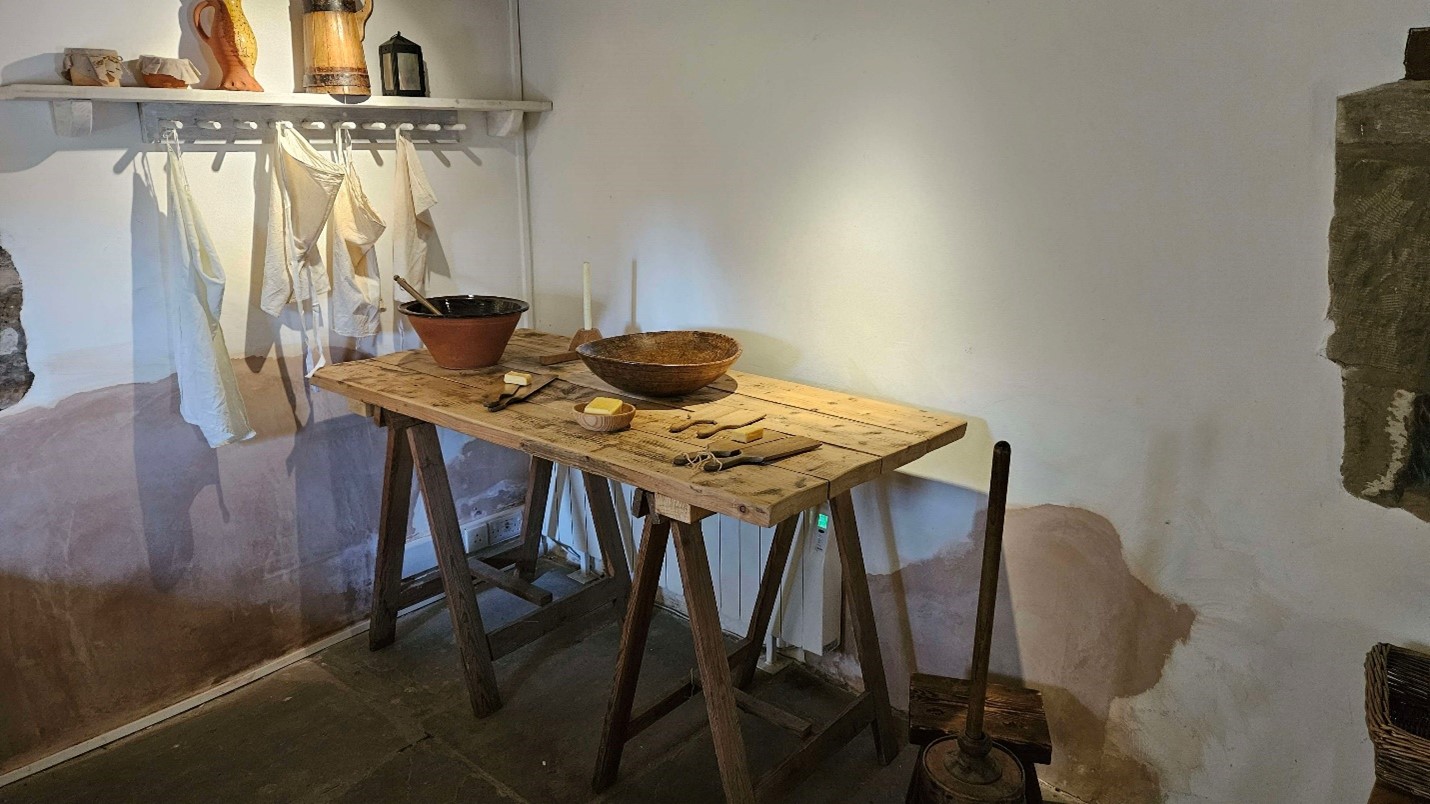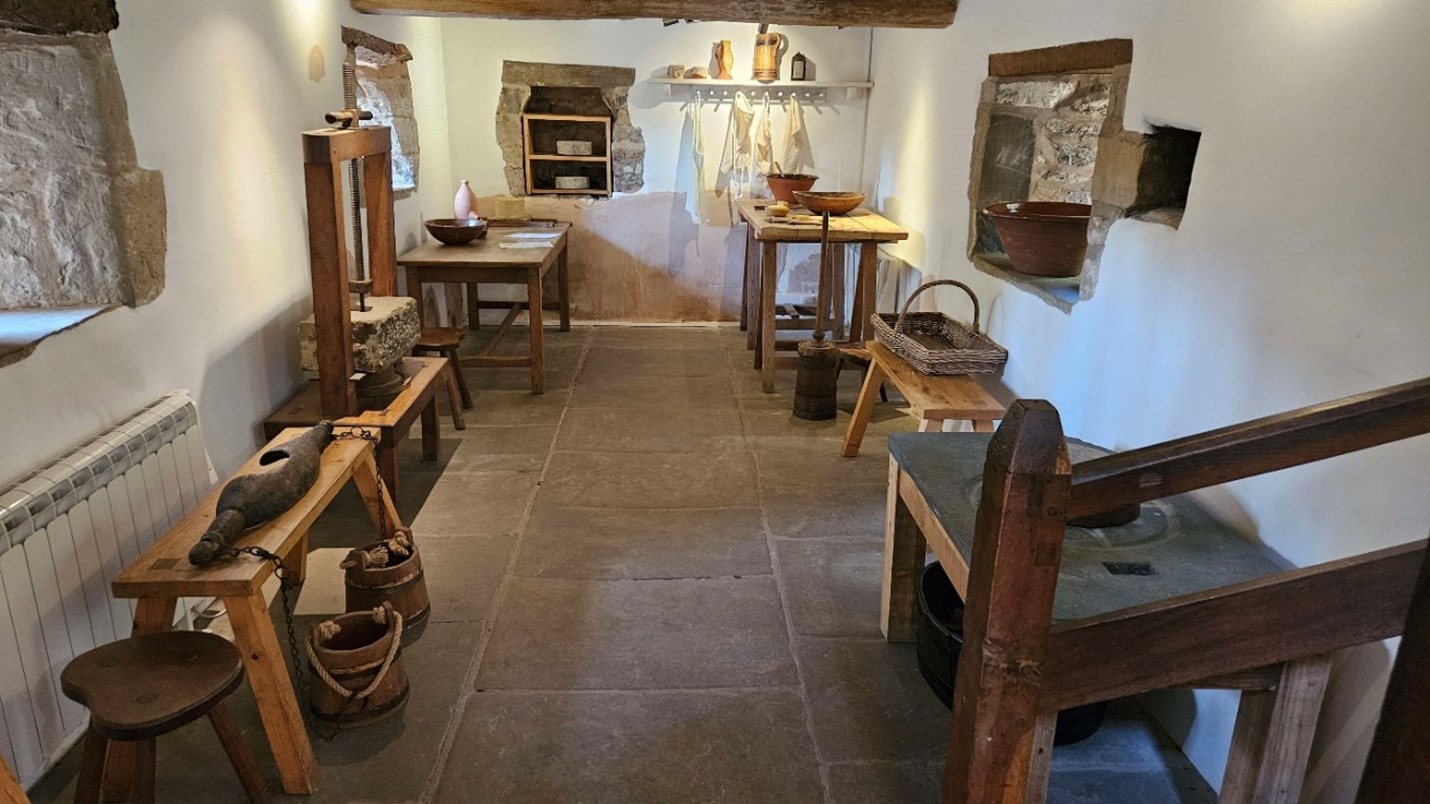The Dairy
This is a cool, dark room ideal for butter and cheese making.
The dairymaid, Jennet, would collect milk from a nearby farm, where the cows were milked by hand. She would have to carry two heavy, full pails at a time on a yoke across her shoulders.
Dairy produce was seasonal in the 1620s. When cows and sheep gave birth in the spring they started to produce milk. In spring, fresh butter and soft cheeses would be made. In the summer months, plentiful grazing meant that the milk was rich and creamy. Butter would then be more heavily salted to preserve it and harder cheeses were made using the cheese press, enabling them to be stored for the months when milk was less plentiful. In season, the dairymaid would make butter every two or three days, and cheese would be made in batches.
Everything would have to be kept scrupulously clean so all the surfaces would have to be scrubbed daily. Slate surfaces were used to keep the milk, butter and cheese cool.
The replica wooden cheese press is of a new style for the 17th century with the top screw moving the weight, rather than a hinged press. The Swithland slate cheese press base on the right was found in the garden, although it is likely to date from the 18th century.
Go up the stairs to the
